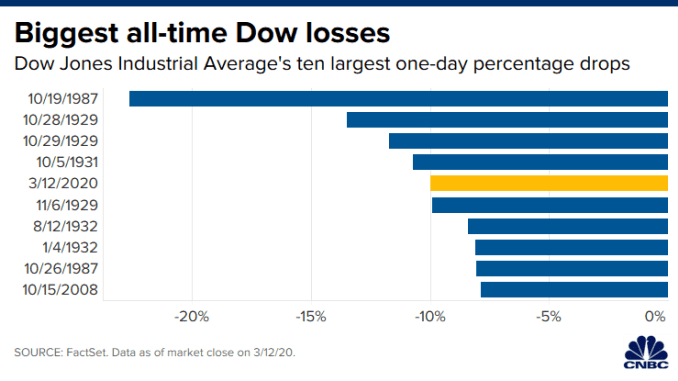What to ask yourself before making any investment moves as the market falls

As the stock market sinks, you’ve probably already heard not to check your 401(k).
Yet when it comes to steering your personal financial plan in a turbulent time, it’s still wise to take a proactive approach, according to Michael Liersch, a behavioral finance expert and global head of wealth planning and advice at JPMorgan Chase.
Generally, people tend to take one of two strategies to uncertain markets, Liersch said. Either they decide on action no matter what or stick to a do-nothing approach.
Those extreme approaches tend to happen when individual investors get too caught up in the short-term news, and forget their long-term time horizon.
“What I always coach investors, clients, advisors to do is really to empathize with themselves,” Liersch said. “If we didn’t feel anxious, that would be unusual.”

Start by acknowledging that emotion, telling yourself it’s OK feel this way, Liersch said. Next, and importantly, remind yourself of your individual goals and objectives.
That includes revisiting what you’re trying to achieve, how much you need to have in your investments for your goals and the time horizon over which you plan to stay invested.
For example, if you’re 50 and planning to retire in 15 years at age 65, you want to invest more, not less, in order to successfully get to where you want to be.
“Those kinds of anchor points help people understand whether those short-term feelings and what they’re seeing in the news really translates into actions and decisions they should make in their portfolio,” Liersch said.
More from Personal Finance:
What a payroll tax cut could mean for Social Security, Medicare
With interest rates near zero, preserving retirement income gets risky
3 ways to build tax-free retirement savings in the downturn
Here’s what to ask yourself before you make any immediate investment moves.
Assess your capacity for risk
Once you’ve identified your goal — the reason why you’re investing the money — ask yourself how much risk you need to take on to successfully reach it.
Let whether or not you need to take risk be your guiding principle, Liersch suggested.
“If you need to take risk, really the answer is to potentially re-evaluate your portfolio or re-establish if the strategy you’re in is working for you,” Liersch said. “It’s not necessarily to no longer take risk.”
Look at your cash flow needs
If you have short-term cash flow needs, you may need money from your investments now.
But if your time horizon is longer, then you have a higher capacity to take chances.
“Looking at that balance between the need to take risk and the capacity to do so can help investors understand whether those market dynamics are really relevant to them or not,” Liersch said.
Do an emotional gut check
Lastly, assess how the market swings change your personal tolerance for risk.
While it is important to empathize with yourself and recognize the emotions you feel amid market turbulence, that shouldn’t be your first priority, Liersch said.
Instead, let your goals drive your investment decision making.
“I would just encourage investors to always be engaged,” Liersch said. “Instead of making the markets the starting point for the evaluation, go back to the objective or the goal as the starting point.”
[“source=cnbc”]




